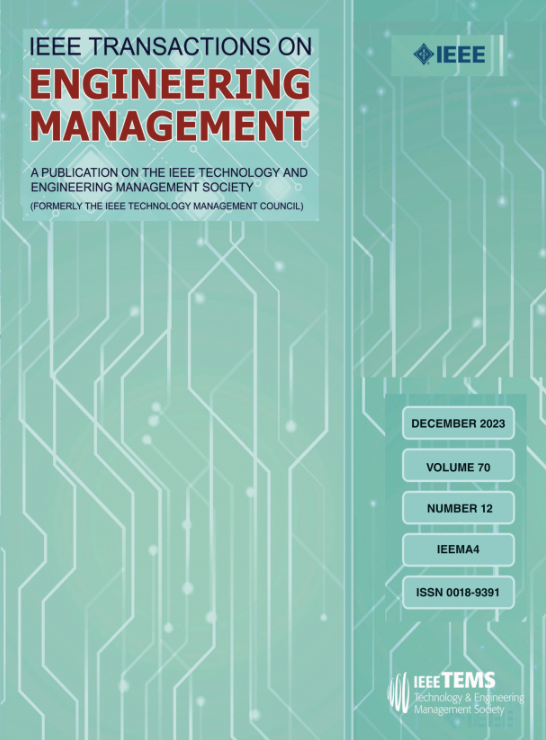The Global Knowledge Evolution of Carbon Capture, Utilization, and Storage Technology: A Network Analysis of Patent Mining
IF 4.6
3区 管理学
Q1 BUSINESS
引用次数: 0
Abstract
Carbon capture, utilization, and storage (CCUS) are crucial for mitigating CO2 emissions. Exploring the evolution of CCUS technology can help accelerate the development of CCUS technology. This study aims to reveal the connections and interactions between technology topics, clarify the evolutionary path of CCUS technology, and understand the deep mechanism of technology evolution. To achieve these goals, this article adopts an integrated approach to analyze the evolution process of CCUS technology by combining patent mining and knowledge evolution theory. First, the BERT-LDA- model is used for fine-grained extraction of technology topics from CCUS patents; second, an evolution network depicting the topics’ evolution path is constructed based on their temporal correlations; finally, knowledge evolution theory is used to explain the characteristics of topic evolution and analyze potential technological opportunities. The results indicate that CCUS technology has gone through five major development periods with gradually enriched and deepened topics; newborn, inheritance, and temporary emergence are common topic evolution relationships in the evolution network; the evolution of these topics shows stability, heritability, and variability. These findings not only help enterprises to grasp the development trend and potential opportunities of CCUS technology but also provide policymakers with a basis for decision making.碳捕集利用与封存技术的全球知识演化:专利挖掘的网络分析
碳捕获、利用和封存(CCUS)对于减少二氧化碳排放至关重要。探讨CCUS技术的演进,有助于加速CCUS技术的发展。本研究旨在揭示技术议题之间的联系与互动,厘清CCUS技术的演化路径,了解技术演化的深层机制。为了实现这些目标,本文将专利挖掘与知识进化理论相结合,采用集成的方法分析CCUS技术的演化过程。首先,利用BERT-LDA-模型对CCUS专利中的技术主题进行细粒度提取;其次,基于主题的时间相关性,构建描述主题演化路径的演化网络;最后,运用知识进化理论解释了话题进化的特点,分析了潜在的技术机会。研究结果表明:CCUS技术经历了5大发展时期,课题内容逐渐丰富和深化;新生、遗传和暂现是进化网络中常见的主题进化关系;这些主题的演变表现出稳定性、遗传性和可变性。这些发现不仅有助于企业把握CCUS技术的发展趋势和潜在机遇,也为决策者提供决策依据。
本文章由计算机程序翻译,如有差异,请以英文原文为准。
求助全文
约1分钟内获得全文
求助全文
来源期刊

IEEE Transactions on Engineering Management
管理科学-工程:工业
CiteScore
10.30
自引率
19.00%
发文量
604
审稿时长
5.3 months
期刊介绍:
Management of technical functions such as research, development, and engineering in industry, government, university, and other settings. Emphasis is on studies carried on within an organization to help in decision making or policy formation for RD&E.
 求助内容:
求助内容: 应助结果提醒方式:
应助结果提醒方式:


